At any given time, there seem to be 1,000 different ways to market your book.
It’s not only hard to know what you should be doing. It’s also hard to keep up with all the options that are available.
After years of helping authors build their platforms, and then use those platforms to launch top bestsellers, I’ve put together this checklist of proven book marketing methods to help you create your book marketing plan.
Website

Your website is your home base. It’s where people land after they Google you, and the first place they go to find out about your books. It is your book marketing hub.
The goal is to build your website around you, the author, instead of around any one book or series. This will be your home base for your entire writing career.
Keep the most important information clearly visible, and don’t overcrowd it with useless content.
Make sure to include all of these elements:
- Email list signup – Use both a pop-up and a homepage sign-up form to invite people to sign up for your email newsletter, so you can contact them directly in future.
- Author bio – Provide interesting information about your past, and how you got to where you are today.
- Speaking page – Provide a speaker’s reel, your topics, and your contact information.
- Book page – Provide the book cover(s), reviews/endorsements, and links to purchase your book(s) online.
- Blog – Provide valuable content—information your readers will benefit from or stories they’ll enjoy—and updates on current and future projects.
- Evergreen content – Create useful content that will stay relevant for a long time (like this article!).
- Links to social media – Provide social media icons or other clear ways people can connect with you on their favorite social media platforms.
Suggested Reading:
- How to build the ultimate author website – A step-by-step guide to building your author website.
- How to Automate Your Book Marketing
- Should authors have a blog?
- Book Cover Design Mastery
Social Media
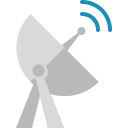
Social media can be useful for finding new fans and connecting with media influencers, such as popular speakers, authors, interviewers, and bloggers.
When setting up your various social platforms, be sure to keep them consistent. Your profile bio and headshot should remain the same, regardless of the platform.
You want your branding on all platforms to work together.
- Facebook Page – With more than 700 million members, this is the most popular social media platform. Features include:
- Custom header image
- Headshot
- Integrated blog and Twitter posts, so that these automatically post to your Facebook page
- Email list sign-up form or link
- Twitter – There are just a few customization opportunities available with Twitter, so take advantage of them:
- Custom background and colors
- Headshot
- Compelling bio, with link to your website
- LinkedIn – The business professional’s social network. Make sure you put your best foot forward here, by taking advantage of all their tools:
- Fill out your profile completely, to the “100%” mark
- Link your profile to your blog and Twitter posts so that these automatically post on LinkedIn
- Request and give recommendations
- Join groups
- Connect with everyone you know on LinkedIn
- Pinterest – Pin your articles and related content.
- YouTube – Host your videos on the internet’s most popular video platform.
- Google+ – Post your articles and related content.
- Custom background
- Headshot
- Brief bio, with link to your website
Suggested Reading:
Email Marketing

This is your #1 platform-building tool. Your greatest marketing asset is a list of fans who have given you direct access to their in-box.
Email is more effective at selling books than everything else on this page combined.
I recommend that every single author set up an email list and focus on getting as many readers as possible to sign up.
You will need to create a compelling “hook” as a sign-up incentive, as well as automated emails that introduce subscribers to your content, and a custom email template, so that your branding is consistent.
- Automated emails – A sequence of pre-written emails that are automatically sent from your email service provider as autoresponders to new newsletter subscribers.
- Sign-up incentive – Provide a free PDF, digital download, or some other free content as a “hook” to encourage people to sign up.
- Email list sign-up – Put a sign-up form on your website, add a sign-up link to your email signature, and invite people to sign up via social media.
- Custom template – Use a simple email template, so that people feel like they are getting a message directly from you instead of from your PR department.
Suggested Reading:
Podcasting
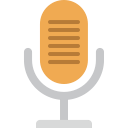
Podcasting is currently exploding in popularity; more people than ever are tuning in. It’s your chance to connect with fans who would never hear about you otherwise.
As a bonus: it’s easier and cheaper than ever to get a podcast up and running.
- Multimedia – Turn your book content into podcast episodes.
- New audiences – Do a short-run 8- to 12-week series to get noticed in the iTunes New & Noteworthy section.
- Writer network – Help out your fellow writers by inviting them on as guests.
- Fast content – It’s often much easier to record new audio than it is to write new content.
Suggested Reading:
Amazon Presence
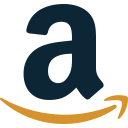
Amazon is the international book-selling giant. In any book marketing campaign, you must focus on making sure your Amazon presence is a well-oiled machine.
Your book page is your sales page. Make sure all of the content is moving people to a buying decision.
Your author page is your connection page. Provide ways for readers to connect with you now and long into the future.
- Book page – Think of this as a sales page instead of a product information page. Everything about it should be moving people closer to buying your book, including your:
- Book images
- Product description
- Endorsements and reviews
- Author page – Use this section to provide opportunities for your readers to connect with you outside of Amazon.
- Author headshot
- Author bio
- Blog and Twitter feeds (linked)
- Videos
Suggested Reading:
Book Trailer

Creating a trailer for your book is all the rage now. But be aware that it can also be a huge money pit that doesn’t impact sales at all.
If you decide to create a trailer, first write compelling script that moves people to buy the book. Then decide how you are going to produce it. You can produce it yourself, hire a production team, or hire out certain parts of the production process.
- Script – Think through how this video is going to be used to sell your book. Don’t talk about your book’s features. Talk about the value and benefits people will obtain from reading it.
- Production – Produce it yourself with a video camera or iPhone and iMovie, or hire a production crew to do it for you.
Suggested Reading:
Book Interior

When someone buys your book, their natural next step should be to visit other parts of your online platform.
Make sure you invite them to move from being a reader of one book to looking more deeply into everything you’re doing:
- Last page – Include a link to your website on the last page of the book.
- Resources – Include links to additional resources throughout the book. The end of chapters are a great place for this.
- Other books – At the end of each book, include promotions for your other titles.
- Additional content – See Bonus Book Content
Suggested Reading:
Bonus Book Content

A book can only offer so much.
What can you add to your website to provide additional content that your readers will love?
You could create videos that introduce chapters, character guides, Q&As, or even additional products to sell.
Your book is just the start! Bonus content can include:
- Chapter videos – Record videos of you introducing the content of each chapter of your book.
- Downloads – Provide worksheets, discussion guides, character profiles, or other content that didn’t make it into the final manuscript.
- Offers for other books, products, and services
– If people have purchased your book, they are much more likely to purchase other things from you as well. - Images – Such as artwork, photos, and illustrations.
Incentive Structure

Do you want to drive bulk sales—sales of multiple copies of your book? Consider setting up an incentive structure.
What can you give away as an incentive for people to buy multiple copies at once?
Joint venture launches, book clubs, product sponsorships, and digital products are four great places to start:
- Joint venture launch – Partner with another author or expert to promote your book and their products together.
- Book clubs – Provide discussion questions, or even offer to Skype in and talk directly with the group.
- Product sponsorships –
Invite companies to give away products to your book buyers in exchange for promotion of their product. - Digital products – Provide free downloads of ebooks and other digital products to your book buyers.
Media Outreach Campaign
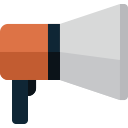
Media coverage, both large and small, can play a huge role in selling books.
Make sure you are focused on providing fantastic and exclusive content, and not only on pitching your book:
- Media list – Create your list of media outlets and find potential contact information.
- List of pitches and angles – Create several ways to present your book and your expertise—create several different pitches from different angles, to appeal to different media outlets.
- Email templates for outreach – Write templated emails that you can customize and use multiple times, to reach out to similar media outlets.
- Spreadsheet for tracking – Keep track of every media outlet, contact name, date contacted, response, etc., in a spreadsheet.
Paid Advertising
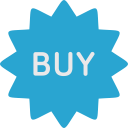
Though it can often be a double-edged sword, paid advertising can be a useful way to connect with new readers.
Be careful not to overspend, and make sure that you have a clear call to action that you can track results on. If your advertising efforts aren’t building your permission list or selling books, kill it quickly.
- Online Advertising – Starting with online ads is fast, inexpensive, and easy to track:
- Google Adwords
- Facebook ads
- LinkedIn ads
- StumbleUpon ads
- Price promotion – Sites such as BookBub, Book Gorilla, etc.
- Offline Advertising – Offers a wide range of possibilities, from direct mail to magazine advertisements. Most are a waste of money, so tread carefully.
Suggested Reads
In-Person Book Tour

Getting out and meeting readers can be a great way to build those lasting connections. However, a book tour can also be a huge waste of time and money.
Only visit places you know you can draw a crowd to, and don’t overextend yourself with the travel.
Always focus on selling books and making connections with readers.
- Choose the right locations for events – Only consider towns where you know you can draw a crowd, and locations that are perfect for your readers. Don’t automatically default to bookstores; there are other options.
- Make connections and set dates – Get date confirmations, and coordinate with the venue to ensure they are ready for your event.
- Pre-plan and book your travel itinerary – Make sure all of your plane tickets, hotels, and local transportation are all booked well in advance, and are well organized.
Online Book Tour
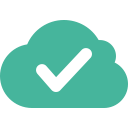
An online book tour is always much more economical than a live book tour, and is a great way to partner with other authors, bloggers, and content creators.
The goal is to get as much coverage the first month of your book release as possible. Options include:
- Interviews on podcasts and blogs
- Guest posts and articles on other websites
- Live chats, both video and written:
- Facebook events
- Google Hangout
- Webinars
Live Events

Often a better alternative to a traditional book tour, making appearances at live events can be a fantastic way to connect with readers and sell books.
Speaking at an event is the best way—and showing up at conferences and festivals where a crowd already exists is much easier than trying to draw one yourself.
- Speak at conferences, conventions, and festivals – What conferences and conventions are your readers attending? Submit proposals to speak at these events.
- Host events at conferences, conventions, and festivals –
If you can’t be a speaker, set up your own event off-site! Host an event through Meetup.com or throw a party. - Hire a speakers bureau – A speakers bureau can open doors and raise your profile in a way that you may not be able to do on your own.
Local Opportunities

Often the easiest press to get is in your hometown. People love local celebrities, so make sure you have appearances at all of the media and events in your city.
While this may be harder if you’re in a major market, smaller towns offer huge opportunities for connecting with local fans.
- Bookstores – Show local support for local readers by hosting several events at bookstores such as signings, Q&As, and readings.
- Newspapers, TV, radio, etc. – Local media outlets love to have live guests from the area.
- Groups, clubs, associations – Are there local book clubs or reader groups that meet in your area? Take the time to meet them in person.
- Schools, universities, etc. – Similar to the media outlets, local schools and universities often love to partner with local authors for on-campus events.
Networking

Use what you’ve got. Whether it’s a coworker or your second cousin, connect with people already in your sphere of influence.
One author I know made a list of 100 people and called each one of them personally. In doing so, he found that he already had connections with influencers that he hadn’t even been aware of.
- Long-term network of colleagues and coworkers – Now is the time to pull out the Rolodex and contact everyone you have worked with in the past.
- Family and friends – Call in favors from family and friends to do early reviews of your book.
- Additional groups and connections – Are you in a local cycling club, or do you volunteer at a nonprofit? Make sure they know about your book!
Promo Materials
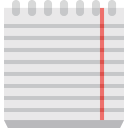
Especially when interacting with the media, promo materials are an essential way of providing information about you and your book. You should already have these ready for them!
Create your book’s one-sheet, a prewritten Q&A, and any other promotional material you might need.
Have it all branded to match your website and any other properties of your brand, so it’s a professional and efficient tool.
- Book one-sheet – Similar to your Amazon book page, make sure this is a sales page for your book. Include the book’s cover image, and provide a brief description of the book, your bio, and endorsements and reviews.
- Author Q&A – These are often used word-for-word by interviewers. Provide several pre-written questions and answers about you and your book.
- Press kit – This is the expanded version of your book one-sheet. Provide more detailed information on the book, and your full author bio. Include links to download hi-res images and other ancillary content.
Book Launch Team

Coordinate a team of fans to help you get the word out about your book.
Put them all on an email list and look for fun ways to get them involved, such as:
- Providing early reviews of your book on Amazon and other sites
- Brainstorming promotion ideas
- Sharing on social media
- Promoting it on their blog, podcast, etc.
Leave a Reply